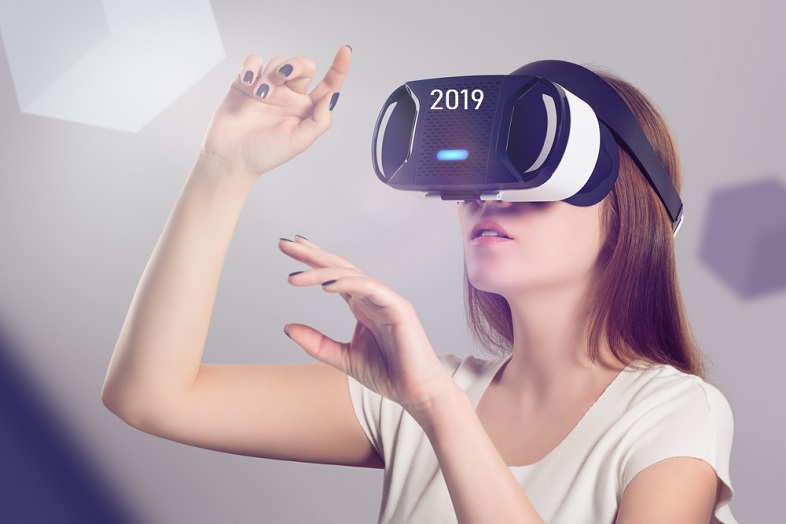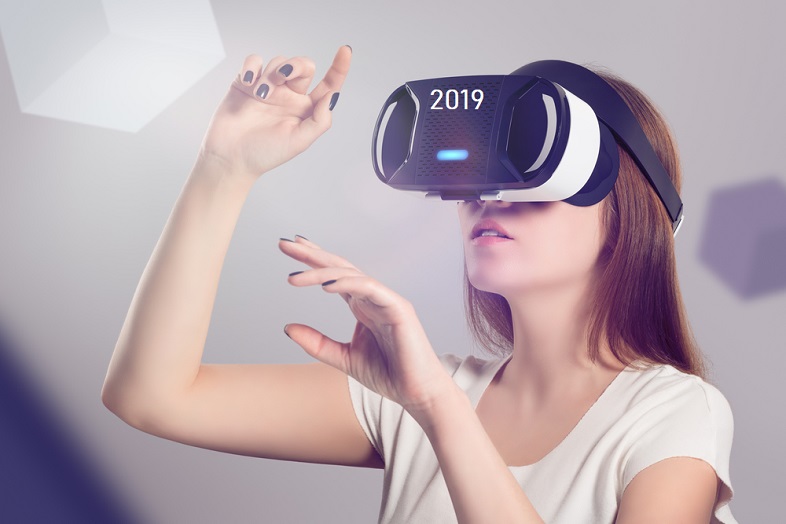
This article is your complete guide to all the AR VR trends you can expect in 2019.
We live in the 21st century, a glorious time in technology where the lines between reality and fiction are blurring, and if you don’t like a reality there is always another way to experience it. Augmented reality (AR) and virtual reality (VR) have come down from the silver screen into our present world. We are living in exciting times, and with the latest augmented reality vs. virtual reality hype, this seems to be absolutely true.
Some Interesting Stats
- In the last 5 years, the number of VR users has grown from less than 1 million to 150+ million.
- The virtual reality market made a staggering $54 billion in 2018 from devices alone.
- VR market is expected to reach the mark of $186 billion collectively from sales of devices and services by 2020.
- Augmented reality will be a technology favorite for many industries in the next couple of years, especially for gaming, healthcare, entertainment, and retail.
- In 2016, revenue from AR mobile apps amounted to $725.4 million worldwide. This figure is drastically increasing since then.
(Source: Statista)
Latest Trends in Virtual Reality
1. Advanced Control VR
The first thing that most new VR users do after wearing the headset is putting their hands in front, and when they see their hands in this simulated reality, they are mesmerized. This is control VR. By using motion sensor technology, you are allowed to see your hands and body within the VR world.
This gives you a fully immersive experience in the VR simulation. Some big companies are using military grade motion trackers that track hand motions and even finger motions to 1/10th of a degree.
2. Inside-out Tracking
This year will see more of inside-out tracking. Until now, the initial VR systems required an external camera and trackers for sitting scale and room scale VR experiences. With inside-out tracking the new goggles and systems have the on themselves that look out to keep your position.
This is going to be a big change in the VR industry in 2019. A couple of years ago, we witnessed the birth of VR while this is a step ahead in the hardware. With this improvement, people can move around in space and access the six degrees of freedom in virtual reality trends.
3. 8K VR Headsets
8K VR headsets offer dual 4K resolution display for each eye. With 16 million pixels, these headsets offer six times the resolution of current VR headsets. Some advanced headsets also support eye tracking and full position tracking for a more realistic experience in the virtual world.
4. Advanced VR Accessories
VR motion chairs are already here, and they are taking VR experience to new levels by incorporating a full 360-degree motion. These chairs are perfect to replace flight simulations and theme-park simulators.
The future is even brighter with omnidirectional treadmills being developed. Omni-directional treadmills are the first stage to a leading-edge technology where you can freely roam in the real world and experience the simulation without moving from your place.
Latest Trends in Augmented Reality
1. Advanced AR Wearables
AR is coming into the forefront with a number of wearables out there that are reinventing AR and taking it out of the mobile screens and putting them on AR goggles. This technology is becoming more capable and more mature.
Hence, aspects like depth of field and 3-dimensional audio experience are becoming a more intricate part of AR and making a fully standalone device that is untethered. The video resolution and color quality are improving steadily. A goal for this year is to make AR run faster as it works with real-time data and yet aim for very low power consumption.
2. AR Drive Holographs
The present-day example of AR holograph would be a holographic navigation system for cars. An advanced augmented reality interface provides you with clear directions and a wealth of helpful information designed to take you to your destinations as quickly and safely as possible.
Due to this, solution drivers don’t need to wear any special eyewear or headgear as the AR visuals are projected directly to the front windshield of the car.
3. AR Hololens
The Hololens is a self-contained holographic computer that allows you to view and interact with digital content that it projects onto the world around you. Through the use of special sensors, advanced optics, and a holographic processor; it aims to transform the way we work, play, share and learn.
Since 2016, there have been hundreds of apps developed for the Hololens users for them to experience augmented reality in new and innovative ways.
General Advancements in AR and VR in 2019
Iris detection is a good direction to work on this year. With AR and VR sets having no particular keyboard to log in, the users can then log into their preferences by iris detection technology. The screen door effect has always been an irritating problem that every user and provider had to face. All the big companies are trying to minimize the screen door effect of AR and VR sets.
The VR and AR app development trend will always be around and stay strong. All the augmented and virtual reality projects can only begin with a mobile app, but that would be just the first step.

